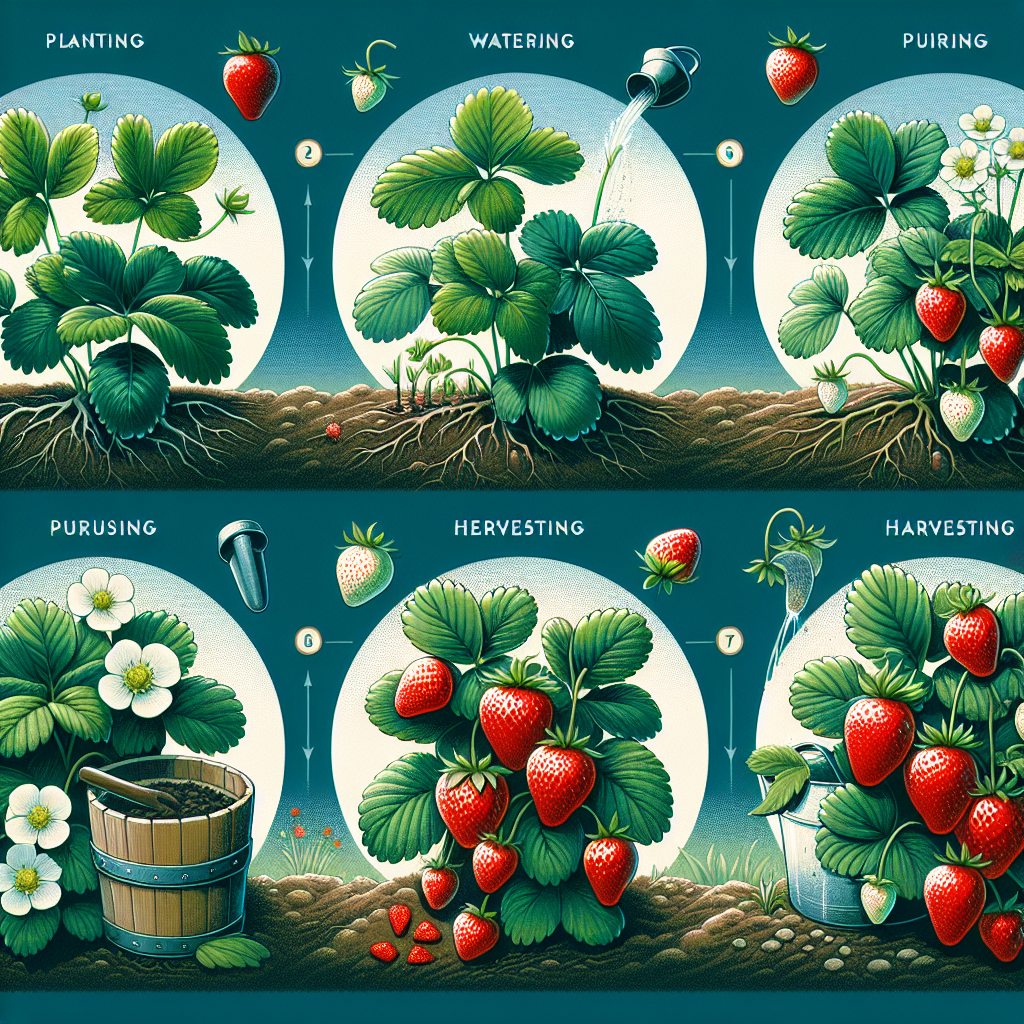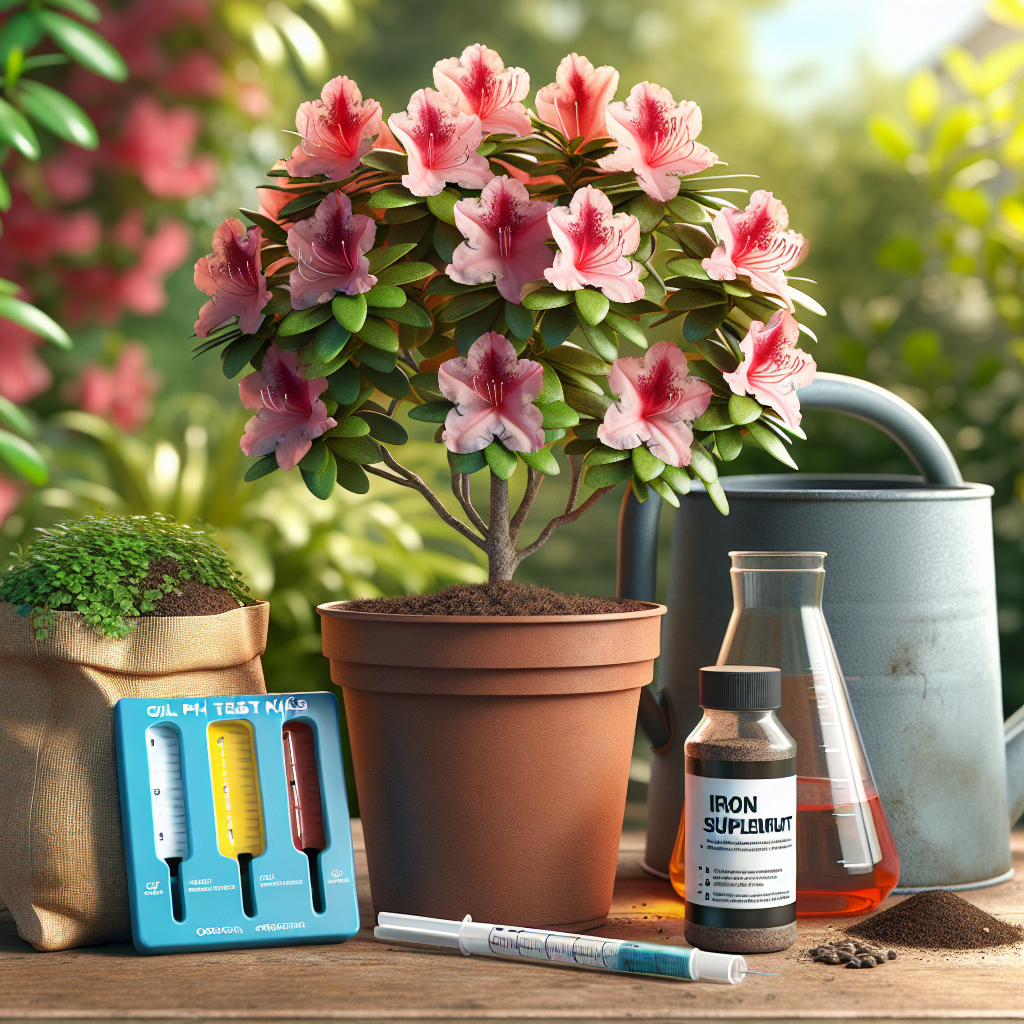Growing and Caring for Sea Buckthorn
Updated May 10, 2024 at 11:58 pm

Gardeners Guide to Sea Buckthorn: Overview
- Pet Friendly: Generally safe, but always monitor pets as they can be sensitive to new plants.
- Light Requirements: Full sun is preferred, with at least six hours of direct sunlight daily.
- Watering: Requires moderate watering, allowing soil to dry out slightly between watering sessions.
- Humidity: Tolerates dry, coastal conditions with low to moderate humidity levels.
- Temperature: Hardy in temperatures as low as -40°F once fully established.
- Difficulty: Moderate, requires some understanding of plant’s needs and proper pruning techniques.
What is Sea Buckthorn and Why Grow It?
Sea Buckthorn (Hippophae rhamnoides) is a resilient shrub known for its bright orange berries and silver-green foliage. It is not only prized for its ornamental beauty but also for its nutrient-rich fruit that is high in Vitamin C, E, and beneficial fatty acids.
The reasons for growing Sea Buckthorn are numerous – from creating a habitat for wildlife to harnessing its medicinal and culinary uses. Its berries are often used in supplements, skin care products, and as a superfood in various recipes.
Choosing the Right Location for Sea Buckthorn
Sea Buckthorn thrives in full sunlight and well-drained soil. While it can tolerate some shade, the yield of berries will be significantly lower. An open area that receives ample sunshine will provide the best conditions for growth.
When considering soil, Sea Buckthorn prefers slightly acidic to neutral pH. If your soil is heavy and clay-like, incorporating sand or gravel can improve drainage and air flow, which are vital for root health.
Planting Sea Buckthorn: Best Practices
Spring is the ideal time for planting Sea Buckthorn. This gives the plant ample time to establish its root system before winter arrives. Planting in groups can ensure proper pollination as Sea Buckthorn is dioecious, meaning individual plants are either male or female.
Be sure to space the shrubs 6 to 8 feet apart to allow room for growth, and if you’re planting multiple rows, a spacing of 12 to 15 feet between rows will suffice.
Watering and Nutrient Requirements
While Sea Buckthorn is drought-tolerant once established, young plants require consistent watering as they develop their root systems. Water deeply, especially during dry spells, ensuring you moisten the soil to the root level without waterlogging.
As for feeding, a balanced slow-release fertilizer applied in early spring can support healthy growth. However, avoid over-fertilizing as Sea Buckthorn is quite hardy and can thrive in less fertile soils.
Pruning Sea Buckthorn for Optimal Growth
Regular pruning not only maintains the size and shape of Sea Buckthorn but also encourages better fruit production. Prune out dead, damaged, or diseased branches in late winter or early spring when the plant is still dormant.
To promote new growth and berry production, thinning out older branches every few years is also necessary, as fruit is produced on new wood.
Harvesting Sea Buckthorn Berries
The berries of Sea Buckthorn are typically ready for harvest in late summer to early autumn. They should be bright orange and give slightly under gentle pressure when they are ripe.
Harvesting can be challenging due to the dense thorny branches, so some gardeners prefer to cut off fruit-laden branches and freeze them, making it easier to remove the berries.
Common Pests and Diseases
Sea Buckthorn is relatively pest-resistant but can occasionally be bothered by aphids or spider mites. A strong blast of water or insecticidal soap can help manage these pests.
As for diseases, good air circulation around plants is crucial to prevent fungal infections. Avoid overcrowding and prune regularly to ensure adequate airflow.
Why Are My Sea Buckthorn Leaves Turning Yellow?
If you notice the leaves of your Sea Buckthorn turning yellow, it could be a sign of water stress, either too much or too little. Check the soil moisture and adjust your watering schedule accordingly.
Poor nutrition can also cause yellowing leaves. A soil test will determine if your plant is lacking in essential nutrients, and you can supplement with the appropriate fertilizer.
What Soil is Best for Sea Buckthorn?
The ideal soil for Sea Buckthorn should be well-draining with a slight acidic to neutral pH. If you need to adjust the soil composition, amending with compost and sand can improve structure and fertility.
Despite its adaptability, investing in quality soil preparation at the time of planting can pave the way for healthier plants and better yields.
Is Sea Buckthorn Right for My Garden?
Considering the unique requirements and benefits of Sea Buckthorn, it can be a fantastic addition if you’re after a low-maintenance plant that provides beautiful foliage, nutritious fruit, and environmental benefits.
However, it’s essential to be aware of its vigorous growth and potential to spread. Ensure you have sufficient space and are prepared for regular pruning to manage its size.
Unique Culinary Uses of Sea Buckthorn
The tangy, citrus-like flavor of Sea Buckthorn berries makes them a versatile ingredient for a variety of dishes. They can be used in jams, juices, sauces, or as a zesty addition to smoothies and desserts.
For home gardeners, the joy of harvesting your own berries and experimenting with new recipes adds another layer of satisfaction to growing Sea Buckthorn.
Sea Buckthorn in Natural Remedies and Skincare
The high vitamin content and antioxidants present in Sea Buckthorn make it a popular choice in natural remedies. Its oil is often used in skin creams and dietary supplements for its healing properties.
Having access to fresh Sea Buckthorn means you can experiment with making your own products at home, controlling ingredients and enjoying the process.
Long-term Care and Maintenance
To ensure your Sea Buckthorn continues to thrive year after year, an annual assessment of the plant’s condition is wise. Look out for signs of stress or disease and address them promptly.
Mulching in spring can help retain soil moisture and suppress weeds. Remember to replenish the mulch layer and keep it a few inches away from the base of the plant to avoid rot.
How to Propagate Sea Buckthorn
Propagating Sea Buckthorn can be done through seed, division, or hardwood cuttings. Cuttings have the advantage of being true to the parent plant and can be taken during the dormant season.
Coating cuttings with rooting hormone and placing them in a mix of peat and sand can encourage root development, providing new plants for your garden or to share with friends.
Sharing the Harvest: Sea Buckthorn and Community
Growing Sea Buckthorn can extend beyond your garden. Sharing the harvest with neighbors or local community groups not only builds relationships but also increases awareness of this remarkable plant.
Consider donating surplus berries to food banks or hosting a harvest day to show others how to utilize Sea Buckthorn in various ways.
Environmental Impact of Growing Sea Buckthorn
With its ability to fix nitrogen in the soil and provide habitat for wildlife, Sea Buckthorn is an excellent choice for eco-conscious gardeners. Its deep-rooting system can also help control erosion and improve soil quality.
Choosing to plant Sea Buckthorn supports local ecosystems and contributes positively to your individual carbon footprint.
Integrating Sea Buckthorn into Your Landscape Design
Due to its striking appearance and hardy nature, Sea Buckthorn can be seamlessly incorporated into various landscaping designs. Its silvery foliage and vibrant berries offer visual interest throughout the year.
Consider using Sea Buckthorn as a natural fence for privacy or as windbreaks in coastal areas. Its extensive root system can also help stabilize slopes and prevent soil erosion in your garden.
Attracting Beneficial Wildlife with Sea Buckthorn
Gardeners often look for plants that can support local wildlife, and Sea Buckthorn is no exception. Its dense thicket provides shelter, and its berries are a food source for birds during the winter months.
Planting Sea Buckthorn can attract pollinators like bees and butterflies, enhancing the biodiversity of your garden and ensuring pollination of other plants in the vicinity.
Understanding Sea Buckthorn Sexes for Fruit Production
Knowing the difference between male and female Sea Buckthorn plants is crucial for fruit production. Only female plants produce berries, and they require a male pollinator nearby for fertilization.
When purchasing Sea Buckthorn, it`s essential to get at least one male plant for every six to eight females to ensure a good harvest. Proper identification of plant sexes at the time of purchase or from a nursery is essential.
Overwintering Sea Buckthorn: Preparing for the Cold
While Sea Buckthorn is known for its cold hardiness, giving your plants some extra care before winter can improve their resilience. Young plants, in particular, might need extra mulch to protect their roots from freezing temperatures.
Wrapping younger shrubs with burlap can also prevent winter burn from harsh winds and preserve moisture levels in the soil throughout the colder months.
Promoting Soil Health for Sea Buckthorn
Sea Buckthorn has a unique ability to enrich the soil in which it grows. Its roots host nitrogen-fixing bacteria, which can naturally improve the soil fertility over time.
Implementing crop rotation with Sea Buckthorn and other plants can significantly benefit your garden`s overall health, reducing the need for artificial fertilizers.
Companion Planting with Sea Buckthorn
Companion planting is a great way to harness the benefits of Sea Buckthorn in the garden. Plants such as legumes can share the nitrogen fixed by Sea Buckthorn, and together they can improve soil structure and fertility.
Consider planting crops that benefit from the shelter and improved soil conditions Sea Buckthorn provides—this can result in a more productive and dynamic garden ecosystem.
Avoiding Invasive Tendencies of Sea Buckthorn
While Sea Buckthorn has many desirable traits, it also has the potential to become invasive. It can spread through sucker growth, and if not managed, it could overtake other plants in your garden.
Maintaining boundaries with physical barriers or regular pruning can help control the growth and spread of Sea Buckthorn, ensuring it remains a beneficial addition to your garden rather than a nuisance.
Using Sea Buckthorn as a Natural Remedy for Soil Erosion
If you`re dealing with soil erosion on your property, Sea Buckthorn can be an ideal solution. Its deep roots hold the soil together, reducing the impact of wind and water erosion on landscapes.
Planting Sea Buckthorn on slopes or banks can create a living barrier that not only looks attractive but also plays a crucial role in maintaining the integrity of the soil.
Customizing Sea Buckthorn Varieties for Your Garden
There are several varieties of Sea Buckthorn available, each with its unique characteristics. Some are bred for larger berries, while others might have a more compact growth habit suitable for small gardens.
When selecting a variety, consider your space, the intended use of the berries, and the overall aesthetics you aim to achieve in your garden.
Local Regulations and Sea Buckthorn Planting
Before planting Sea Buckthorn, it is essential to check any local regulations or restrictions. Due to its invasive nature in some regions, there might be specific guidelines or prohibitions concerning its cultivation.
Being aware of and adhering to these regulations is vital to ensure responsible gardening practices and to prevent the potential for ecological imbalances in your area.
Sea Buckthorn as a Focal Point in Garden Design
Sea Buckthorn`s distinctive look can serve as an eye-catching focal point in garden design. Positioning it so that it catches the sun can make its berries glisten, creating a stunning visual effect.
Using Sea Buckthorn as a centerpiece can draw attention to a particular area in your garden, and its striking colors can complement a variety of landscaping styles.
Seasonal Variations in Sea Buckthorn Care
Care for Sea Buckthorn varies with the seasons. In spring, focus on mulching and fertilizing; in summer, ensure adequate water during dry spells; in autumn, it is time to harvest; and in winter, protect young plants from the cold.
Adapting your care routine to the seasonal needs of Sea Buckthorn can make a significant difference in its growth and fruit production.
Maximizing Berry Yields in Your Sea Buckthorn Garden
To maximize the berry yield of your Sea Buckthorn plants, proper care and pollination are key. Ensuring that there are enough male plants to pollinate the females and that each plant receives the necessary nutrients can boost berry production.
Additionally, strategic pruning to encourage new, fruitful growth can lead to a more bountiful harvest, allowing you to enjoy the fruits of your labor to the fullest.
Understanding and Mitigating Sea Buckthorn Suckering
Sea Buckthorn is known for its suckering habit, which can lead to unwanted spreading. Understanding how to manage and mitigate this behavior is important for maintaining control over your plants.
Regular inspection of the area around your Sea Buckthorn and cutting back any suckers will help keep the plant in check and prevent it from dominating your garden space.
Exploring the Historical Significance of Sea Buckthorn
Sea Buckthorn has a rich history, with mentions in ancient texts and traditional medicine. Its use in different cultures over the centuries can be both fascinating and informative, providing insight into the plant`s versatility and benefits.
By understanding the historical context of Sea Buckthorn, gardeners can appreciate not only its contemporary uses but also its storied past.
Planning for the Future: Sea Buckthorn Sustainability
As we become more aware of our environmental impact, it’s crucial to plan your garden with sustainability in mind. Sea Buckthorn is a sustainable option due to its minimal requirements for water and fertilizers once established.
Moreover, by encouraging biodiversity and improving soil health, Sea Buckthorn aligns with eco-friendly gardening practices that aim to create a balanced and sustainable ecosystem in your backyard.
Adapting Sea Buckthorn to Different Climates
One of the remarkable features of Sea Buckthorn is its adaptability to various climates. Whether you live in a colder northern region or a warmer southern area, there are cultivation techniques that can help you succeed in growing Sea Buckthorn.
For colder climates, select hardier varieties and provide winter protection. In warmer regions, focus on adequate watering and mulching to keep the roots cool and moist.
Gardeners’ Experiences with Sea Buckthorn
Gardeners who have grown Sea Buckthorn often share their experiences through gardening forums, blogs, and social media. Reading about their successes and challenges can provide valuable insights and tips for your own Sea Buckthorn journey.
Engaging with these communities can also offer support and advice, making the experience more enjoyable and less daunting for novice gardeners.
Creating Educational Opportunities with Sea Buckthorn
Growing Sea Buckthorn can serve as an educational tool, whether for teaching children about plant biology or for informing the public about environmental conservation. Its unique characteristics make it an interesting subject for study and discussion.
Consider creating informational signs or organizing garden tours to educate others about the benefits and care of Sea Buckthorn, fostering a shared appreciation for this wonder of nature.
Highlighting the Aesthetic Appeal of Sea Buckthorn
Although the benefits of Sea Buckthorn are often centered around its health and environmental advantages, its aesthetic value should not be understated. The shrub’s silver-green leaves against the vibrant orange berries create a striking contrast that can enhance any garden’s visual appeal.
Integrating it into your garden design can bring a unique and vibrant touch of color that shifts and changes throughout the seasons, offering year-round beauty.
Favorite Sea Buckthorn Products and Reviews
For gardeners interested in enjoying Sea Buckthorn beyond the garden, there are several products on the market. From oils and nutritional supplements to pureed berries and teas, these products offer a convenient way to reap the benefits of Sea Buckthorn.
Let’s look at a popular Sea Buckthorn product and consider what users have to say about it.
Sea Buckthorn Oil
Sea Buckthorn oil is a well-known product that showcases the plant’s ability to nourish and heal the skin. Brands like Sibu Beauty and Weleda offer Sea Buckthorn oil that is highly regarded for its quality and efficacy.
Reviews often mention the oil’s restorative properties, claiming it to be a holy grail product for dry, irritated, or aging skin. Users also appreciate the commitment of these brands to using organic and sustainably sourced Sea Buckthorn.
Pros
- High in antioxidants and essential fatty acids
- Organic and sustainably sourced
- Supports skin repair and rejuvenation
- Positive impact on reducing the appearance of scars and wrinkles
Cons
- Can be expensive compared to other skincare oils
- Strong scent may not be appealing to all users
- Potential for skin staining due to the bright color of the berries
Find This and More on Amazon
Nurturing a Legacy with Sea Buckthorn
Planting Sea Buckthorn is more than just adding a plant to your garden; it’s about nurturing a legacy. This hardy and resilient shrub can live for decades, providing continuous benefits to both gardeners and the environment.
By caring for Sea Buckthorn, you’re contributing to a tradition of cultivation that values sustainability, health, and beauty, making a positive impact on the present and future of our natural world.
Sea Buckthorn and Its Role in Eco-Tourism
Eco-tourism initiatives often look for ways to incorporate indigenous and beneficial species into their programs. With its many appealing aspects, Sea Buckthorn is an excellent choice for such endeavors.
Gardens and farms that grow Sea Buckthorn can become part of eco-tourism circuits, offering visitors a chance to learn about this versatile plant while appreciating its role in sustainable agriculture and environmental stewardship.
Final Thoughts on Sea Buckthorn
Sea Buckthorn is a plant of many virtues. While it’s relatively easy to grow and maintain, its positive impacts on health, wildlife, and the environment make it a truly exceptional choice for any gardener.
Whether you’re a seasoned gardener or just starting out, consider including Sea Buckthorn in your garden roster. Its colorful presence and the plentiful harvest of berries will reward your efforts year after year, sharing its richness with the ecosystem around you.
Shop more on Amazon

